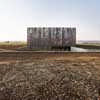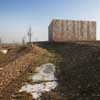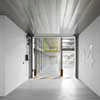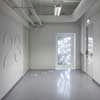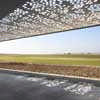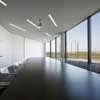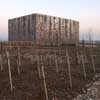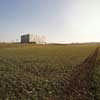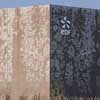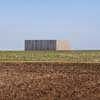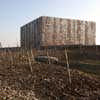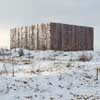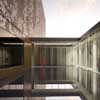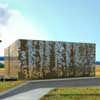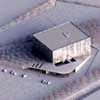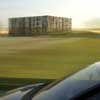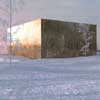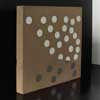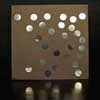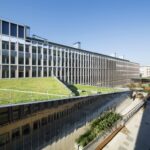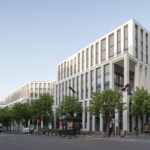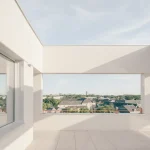EDF archives centre, Bure Building, France Project, News, Design, Property, Image
EDF archives centre France : Bure Architecture
EDF Development in Bure, France – design by LAN Architecture
4 Oct 2011
EDF archives centre
Location: Bure, France
Design: LAN Architecture
A strategic project providing a social and environmental positive impact on the region. The building fully integrates into the landscape as well as it meets environmental quality standards, a fundamental aspect for the EDF’s building strategy.
This building, symbol of the long-term and visible presence of EDF in the Meuse and Haute Marne region, hosts the company’s industrial records.
Within the framework of the Meuse and Haute Marne economic support programme, EDF has decided to centralise all its intermediary Engineering Production Management archives in Bure-Saudron. Until now, these paper copy archives had been stored in nuclear, hydraulic and thermal production units, as well as in engineering units and associated services.
The new centre allows the documents’ organisation and it also ameliorates the storage and the utilisation processes. These archives, on paper-based and microfilm-based formats, will occupy about 70 km of shelves.
The building has also a laboratory for micro-films, specifically designed for this purpose.
The concept
We realised a five level, 19 m high building within a plot of 3.30 hectares comprehensive of an archives area covering approximately 1,400 m² and a total surface of approximately 7,000 m².
This approach results in:
– considerable saving in terms of the building’s envelope
– improved functionality translated by a reduced number of kilometres covered per year,
– a marginal impact on the landscape (with view points at a considerable distance from the building),
– the possibility of a maximum use of the excavated land around the building’s footprint to control water recuperation and treatment on the site,
– an energetically and environmentally extremely high performance building,
– the creation of a symbol representative of the approach taken by the Mouse and Haute Marne economic support programme.
The typology
An archives storage building needs to have a considerable inertia with a minimal exchange with its external setting. The need for fast and simple site management and optimum storage efficiency led us to develop a simple and rational layout.
The building is divided into 2 programmes: archives and offices.
The archives’ part is composed by 20 storehouses of 200 m² each; with regulated temperature and hygrometry. The blocks can resist fire for 2 hours and they are equipped with a sprinkling system.
The offices’ part is N/W oriented, embedded in a natural slope planted with trees and plants. The offices have an ideal view on the surrounding landscape.
The landscape
Tree-planted surfaces give some advantages: from an ecological point of view the trees protect the building against climatic issues.
From an aesthetical point of view – and within an idea of landscape integration – they complete the building by inserting a pattern recurring from the landscape: the “merlons”, narrow strips of land planted with hardwoods.
The project of the landscape foresees the framing of the views from the offices by planting vegetable masses. Some framings already exist from the highway in the project’s direction. A game of sequences is set in combination with the architectural plan in order to vary the visuals and to put an accent on the building’s continuity with its landscape.
Energy
Heat production is principally based on renewable energies and a heat pump. The choice made for the ventilation was to use a double flow ventilation system with heat recuperation. This limits energy consumption resulting from heating and ensures the good sanitary quality of the air.
Low voltage luminaries will result in considerable savings in terms of internal loads. Storage areas will be equipped with presence detectors.
The high performance of the envelope combined with economic ventilation and lighting systems reduces energy requirements.
The use of renewable energies and a heat pump will result in a high level of energy autonomy. The total power consumed by the building represents 29 kWh/m².
The building’s envelope To give the impression of a lightweight building in movement, we proposed incorporating stainless steel studs into the earth-coloured concrete cladding. This solution had the effect of blurring the building’s limits and reflecting the surrounding colours and changing seasons.
The envelope has a very high performance resulting from the materials employed and the technology used for attaching the concrete facing (reduced thermal bridges). The combination of two layers of concrete (structure + facing) and insulation (30 cm) ensures that the building has a high level of inertia favouring comfort during the summer and reduces cooling requirements.
The facade
The elevations will incorporate a total of 120,000 stainless steel studs. Stainless steel studs (7 cm diameter and 1 mm thick) will be incorporated into the formwork during the casting of the integrally coloured prefabricated concrete elevation panels. The panels will be 15.65 m high and either 2.26 m or 2.33 m wide depending on whether they are on the long or short side of the building.
The 8 cm thick panels will be reinforced with concrete ribbing (+ 7 cm). The complex will be suspended from reinforced concrete walls and held in position using distancing jacks. The elevations will have a total thickness of 68 cm.
The facade’s building process was the subject of a patent
EDF archives centre Bure – Further Information
Within the framework of the Meuse and Haute Marne economic support programme, EDF has decided to centralise all its intermediary Engineering Production Management archives in Bure. Until now, these paper copy archives had been stored in nuclear, hydraulic and thermal production units, as well as in engineering units and associated services. As well as being spread over several sites, they were also handled in different ways. It had therefore become necessary to group them to rationalise and optimise the archiving functions: sorting, indexing, management and access.
Over and above the functional aspect needed to manage the archives, this was also a strategic project providing a positive social and environmental impact on the region. This led us to work closely with local elected representatives on the economic aspects, the creation of jobs in the region as well as in the village itself, and on the architectural characteristics. The building needed to be able to fully integrate into the landscape as well as meet environmental quality standards, an aspect now fundamental to EDF’s building strategy.
The objective is to obtain an energy-efficient building through the use of an intelligent morphology, a high performance skin, choice of adapted systems and the production of renewable energy. Wastewater management will reduce the ecological footprint and contribute to a symbiosis between the building and its environment.
The principles underlying our approach were to compress and minimise impacts. Consequently, we directed our research towards a five level, 19 m high building with an archives area covering approximately 1,400 m² and a total surface of approximately 7,000 m². This approach results in:
1) considerable saving in terms of the building’s envelope,
2) improved functionality translated by a reduced number of kilometres covered per year,
3) a marginal impact on the landscape (with view points at a considerable distance from the building),
4) the possibility of a maximum use of the excavated land around the building’s footprint to control water recuperation and treatment on the site,
5) an energetically and environmentally extremely high performance building,
6) the creation of a symbol representative of the approach taken by the Meuse and Haute Marne economic support programme.
An archives storage building needs to have a considerable inertia and is thus “heavy”. The need for fast and simple site management and optimum storage efficiency led us to develop a simple and rational layout complying with the logic of a project that is both bunker-like and, in itself, an industrial process. The question was how to integrate lightness into a massive object? How to avoid interrupting the continuity of the natural landscape?
Firstly, by paying particular attention to the building’s envelope. To give the impression of a lightweight building in movement, we proposed incorporating stainless steel studs into the earth-coloured concrete cladding. This solution had the effect of blurring the building’s limits and reflecting the surrounding colours and changing seasons.
The building has a very high performance envelope resulting from the materials employed and the technology used for attaching the concrete facing (reduced thermal bridges). The combination of two layers of concrete (structure + facing) and insulation (30 cm) ensures that the building has a high level of inertia favouring comfort during the summer and reduces cooling requirements.
The site is isolated and has no sewerage treatment network. Consequently a low-cost natural wastewater system will be installed to meet the building’s needs: sewerage, wastewater and rainwater treatment. As well as ensuring the building’s autonomy, the system will respect the environment by its complete integration into the site’s landscape while providing the efficient elimination of nitrogen (70%), phosphorus (60%) and pathogens.
The choice made for the ventilation was to use a double flow ventilation system with heat recuperation. This limits energy consumption resulting from heating and ensures the good sanitary quality of the air. Low voltage luminaires will result in considerable savings in terms of internal loads. Storage areas will be equipped with presence detectors.
The high performance of the envelope combined with economic ventilation and lighting systems reduces energy requirements. The use of renewable energies and a heat pump will result in a high level of energy autonomy. The total power consumed by the building represents 50 kWh/m².
The building is also designed to be able to easily incorporate a future extension to the east without disturbing the rest of the site. All that is needed is to extent the main transversal axis of the storage rooms to serve the future archives; a shaft for a future goods lift is also provided.
Elevations specifications:
Stainless steel studs (7 cm diameter and 1 mm thick) will be incorporated into the formwork during the casting of the integrally coloured prefabricated concrete elevation panels. A system of fixing ties holding the studs in position during the casting operation will be used to ensure that the studs and concrete are flush with one another. The elevations will incorporate a total of 100,000 stainless steel studs.
The panels will be 15.42 m high and either 2.27 m or 2.34 m wide depending on whether they are on the long or short side of the building.
The 8 cm thick panels will be reinforced with concrete ribbing (+ 7 cm). The complex will be suspended from reinforced concrete walls and held in position using distancing jacks. The elevations will have a total thickness of 68 cm.
EDF archives centre – Building Information
PROGRAMME : National Archives Centre
CLIENT: EDF
LOCATION: Bure – France
COST: € 10,1M excl. VAT
SITE AREA: 3 hectares
BUILT UP AREA: 6;800 m²
COMPETITION: 2008
COMPLETION: 2011
TEAM: LAN Architecture (lead architect), Franck Boutté (HEQ consultant), Batiserf Ingénierie (structure), Michel Forgue
(surveyor), Base (landscape architects), LBE (utilities)
3D images: Gaël Nys, RSI Studio, Paris
EDF archives centre images / information from LAN Architecture
EDF archives centre was shortlisted for the LEAF Awards 2011
LEAF Awards : Shortlisted Buildings + Architects
Location:Bure, France
New Buildings in France
French Architectural Projects
French Architectural Design – chronological list
French Architect Offices – design firm listings
Paris Architecture Walking Tours by e-architect
Parisian architect studios contact details
EDF Campus Saclay, Paris, France
2012-
ecdm

picture from architects
EDF Campus Saclay
The completion of a building in the planning project of Saclay Paris is a unique opportunity to be one of the markers of the future center of excellence established on the plateau. The uniqueness of the site, and it’s present and future characteristics, make it an interesting emerging area.
French Architecture – Selection
Pierre Vives Project
Zaha Hadid
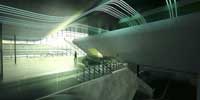
picture from ZHA
Zenith Saint-Etienne Building
Foster + Partners

photo : Nigel Young
Zenith Music Hall Strasbourg
Massimiliano Fuksas Architecture
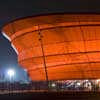
photo : Moreno Maggi
Comments / photos for the EDF archives centre France Architecture page welcome
EDF archives centre Building
Website: EDF France


